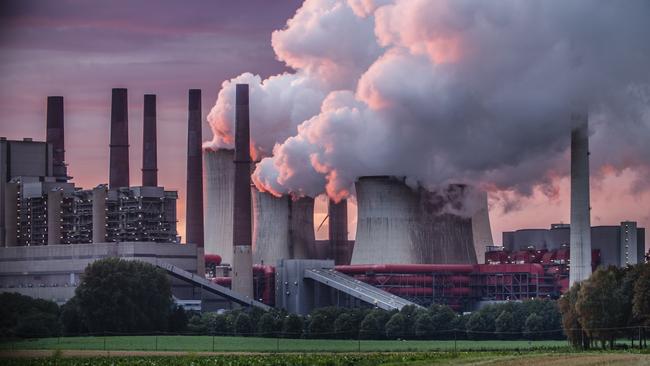Industry needs climate goal, no exemptions: Grattan
The Albanese government must set an emissions-reduction goal for the industrial sector with no shielding of trade-exposed companies, the Grattan Institute says.

The Albanese government must set an emissions-reduction goal for the industrial sector and trade-exposed companies must not be shielded from Labor’s strengthened safeguard mechanism to allow climate goals to be met, the Grattan Institute says.
With industry set to become Australia’s largest emissions source this year, a specific goal to cut pollution must be set for the sector against the backdrop of the government’s broader 43 per cent reduction target by 2030, the institute said.
Many parts of the industrial sector lack a commercially viable path for cutting emissions and face reinvestment decisions within the next 30 years, where poor decisions could lock in emissions for decades.
“The federal government’s most recent emissions projections include little if any reduction in industrial emissions by 2030, which in turn implies very steep reductions to achieve net zero by 2050,” Grattan energy program director Tony Wood said. “But companies in the sector can only guess at what the trajectory is, and this makes it difficult for them to plan capital replacement cycles, expansions and new facilities.”

Labor plans to tighten the baseline for the Safeguard Mechanism, its signature climate policy, which would force the 215 biggest industrial emitters to reduce their carbon footprint more steeply.
With the tougher scheme to start on July 1, 2023, Grattan has called for sweeping changes to industry policies to allow the market to invest in cleaner facilities and meet net zero targets by 2050.
Lower baselines should be set under the mechanism, with the rate meeting an emissions target for the sector while an industrial transformation future fund could share the risk of major capital replacements using low or zero-emissions technology, Mr Wood said. “Where facilities are trade-exposed, do not shield or exclude them from compliance. Exclusions and shielding will increase the cost of achieving the same emissions-reduction outcome, and push effort onto other sectors of the economy such as agriculture and households,” Mr Wood said. “If the government wants to provide assistance with structural adjustment, this should be done outside the Safeguard – for example, through the National Reconstruction Fund.”
While the details of proposed changes have yet to be announced by Energy Minister Chris Bowen, current definitions suggest nearly 80 per cent of covered emissions and over half or 118 of all safeguard facilities could be classified as emissions intensive and trade-exposed industries with exemptions potentially undermining climate change goals.
Grattan also said governments should set phase-out dates for programs and policies that encourage increased fossil-fuel use while states should establish sovereign wealth funds for an expected boom in minerals such as copper.
“The Queensland government could continue to spend the same amount of copper royalties as it earned in 2019, and save the ‘bonus’ royalties from the net-zero mining boom in a sovereign wealth fund,” Mr Wood said, calculating the state would have a $4.5bn windfall by 2041 from copper alone.




To join the conversation, please log in. Don't have an account? Register
Join the conversation, you are commenting as Logout